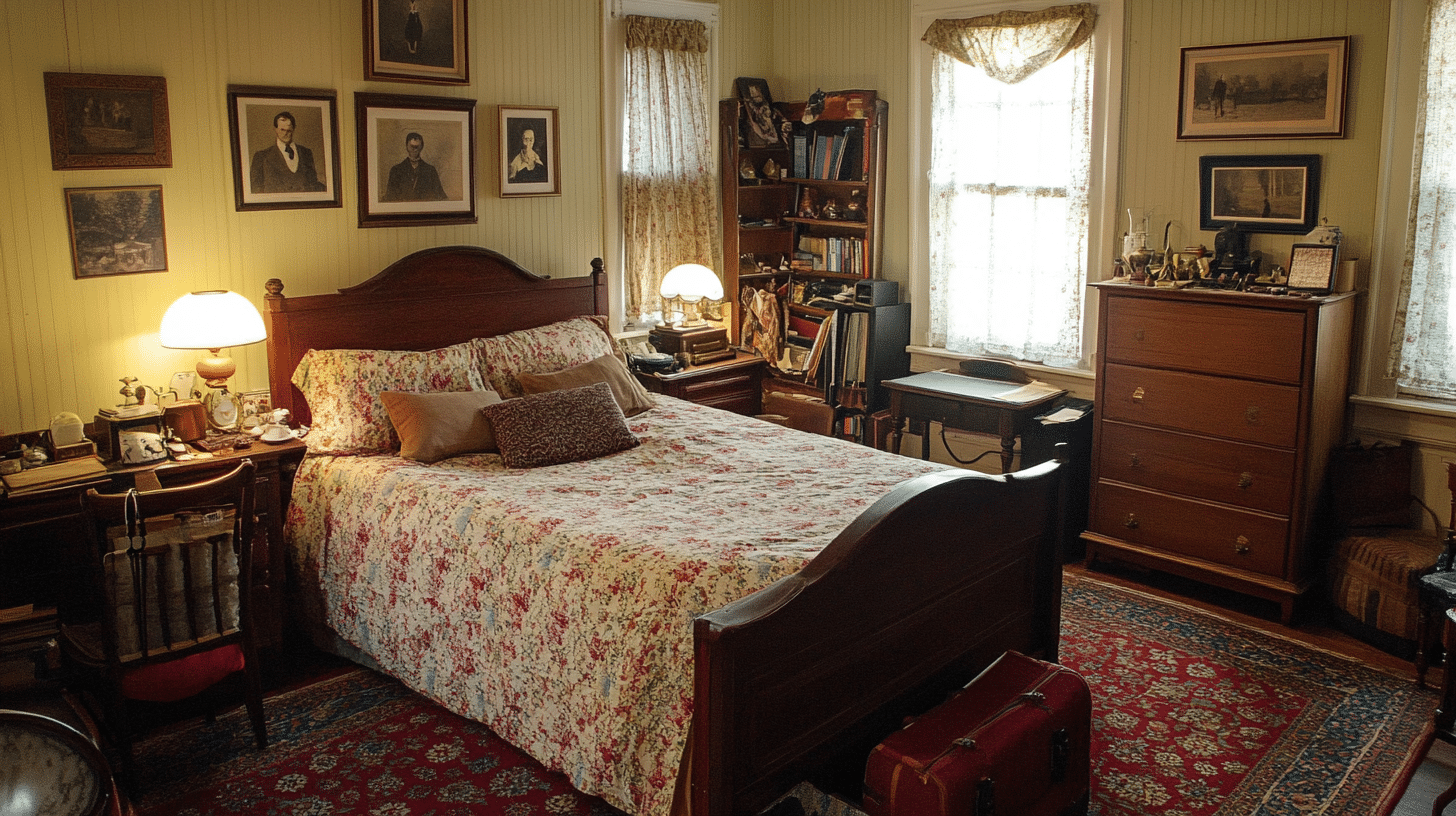Is a messy room really a big deal? As it turns out, the state of your space affects more than just its appearance – it impacts your mindset, health, and daily efficiency in ways you might not realize.
When clutter builds up around you, it can create mental clutter too, leading to increased stress and difficulty focusing.
Conversely, a clean room provides a sense of calm and control that extends beyond your physical environment.
Beyond the mental benefits, regular cleaning helps you stay organized, prevents health issues caused by dust and allergens, and even fosters positive habits that can be applied to other areas of life.
In this guide, we’ll find out why room cleaning matters, what tools you’ll need, and how to tackle the process efficiently – even when your schedule feels too busy for housekeeping. Let’s go!
Why Cleaning Your Room Matters (Besides Just Making It Look Nice)
A clean room isn’t just about making it look better. It affects how you feel, how you think, and even how well you sleep. When your room is messy, it can make your brain feel messy too.
You might feel more stressed, tired, or distracted without even realizing it. But when your space is clean, it gives you a sense of control and calm.
Cleaning also helps you keep track of your things. You won’t waste time searching for that missing sock or homework paper. You’ll know where everything is, and that makes daily life easier.
It’s also better for your health. Dust, dirt, and food crumbs can pile up in a messy room. That means more sneezing, more germs, and even bugs if it goes too far.
And here’s one more thing: taking care of your space builds good habits. You learn how to be responsible and take pride in the things you have. That skill helps in other parts of life too—like school, work, and even friendships.
So, even if it feels boring or small, cleaning your room is actually a big win for your mind, your health, and your daily life.
Tools Checklist to Clean Your Room
Before you start, grab these items to make the job easier:
|
You don’t need everything on this list, just grab what fits your room. Having the right tools ready makes the job faster and smoother.
How to Clean Your Room in 9 Steps
Now that you’ve decided to get started, let’s break it down step by step, making it easy and manageable to tackle each area of your room.
Step 1: Pick Up Trash

Start by picking up all the trash you can find—empty wrappers, bottles, papers, and anything else that doesn’t belong. Walk around the entire room and look in every corner, under your bed, and behind furniture.
It can be easy to miss small bits of trash hiding in corners or under furniture. Try moving items around if you can, so you don’t leave anything behind.
You might even want to get a smaller bag to collect trash from harder-to-reach places like behind your desk or under the bed.
-
What if: If there’s a lot of trash, don’t try to do it all at once. Focus on one area at a time—once you finish picking up one section, move on to the next.
Step 2: Sort Dirty Laundry
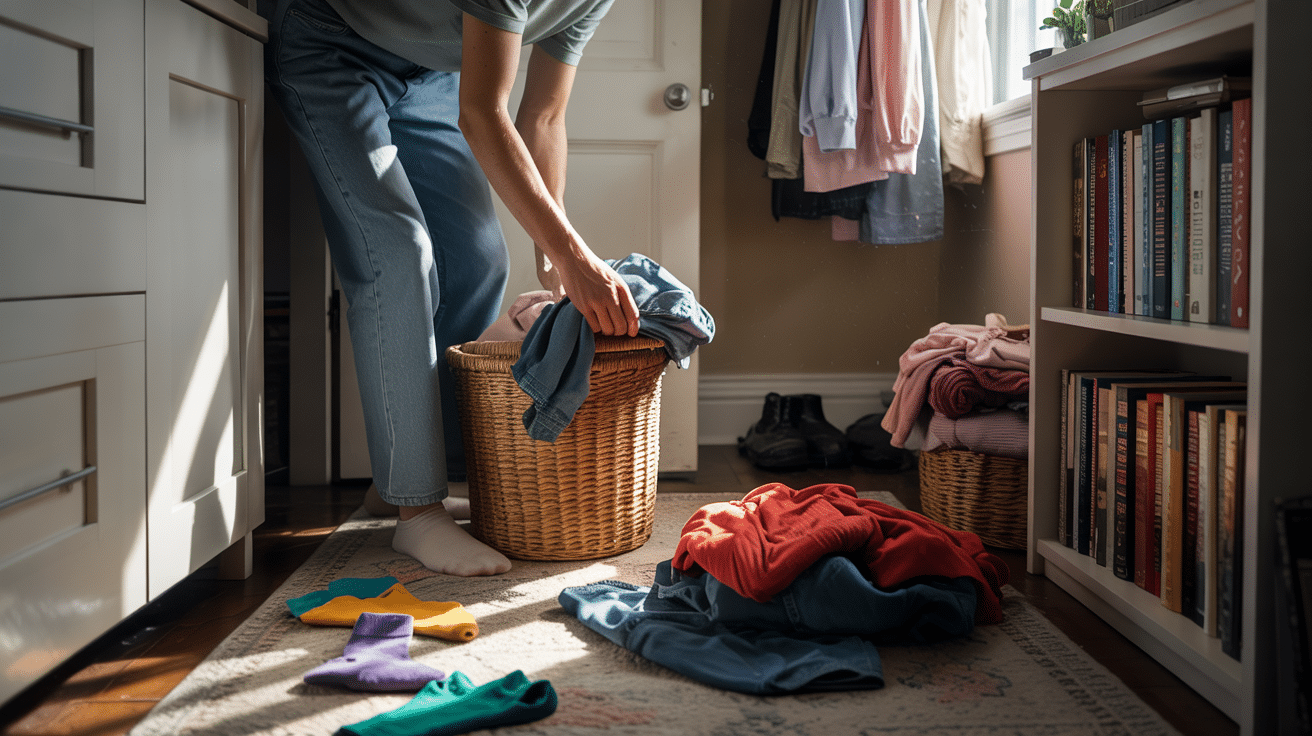
Gather all your dirty clothes and toss them into the laundry basket. Don’t forget to check under your bed, behind the door, and inside any drawers.
It’s easy to forget about clothes that are tucked away or hidden in drawers. A quick check of these areas will help you catch anything you might have missed.
-
What if: If your laundry basket is full or hard to move, try dividing it into smaller loads. You can tackle the laundry later, but for now, just focus on gathering it all in one spot.
Step 3: Organize Your Belongings

Take a few minutes to put everything back where it belongs—books, gadgets, or anything that’s out of place. If something doesn’t belong in your room, set it aside to return later.
Use bins or baskets to organize smaller items. You’ll be surprised at how much more organized your room will look just by putting things in the right places.
-
What if: If you have a lot of items that don’t seem to fit anywhere, take a moment to think about what you actually need. Is there anything you can donate or throw away? It’ll save you time in the long run.
Step 4: Dust All Surfaces
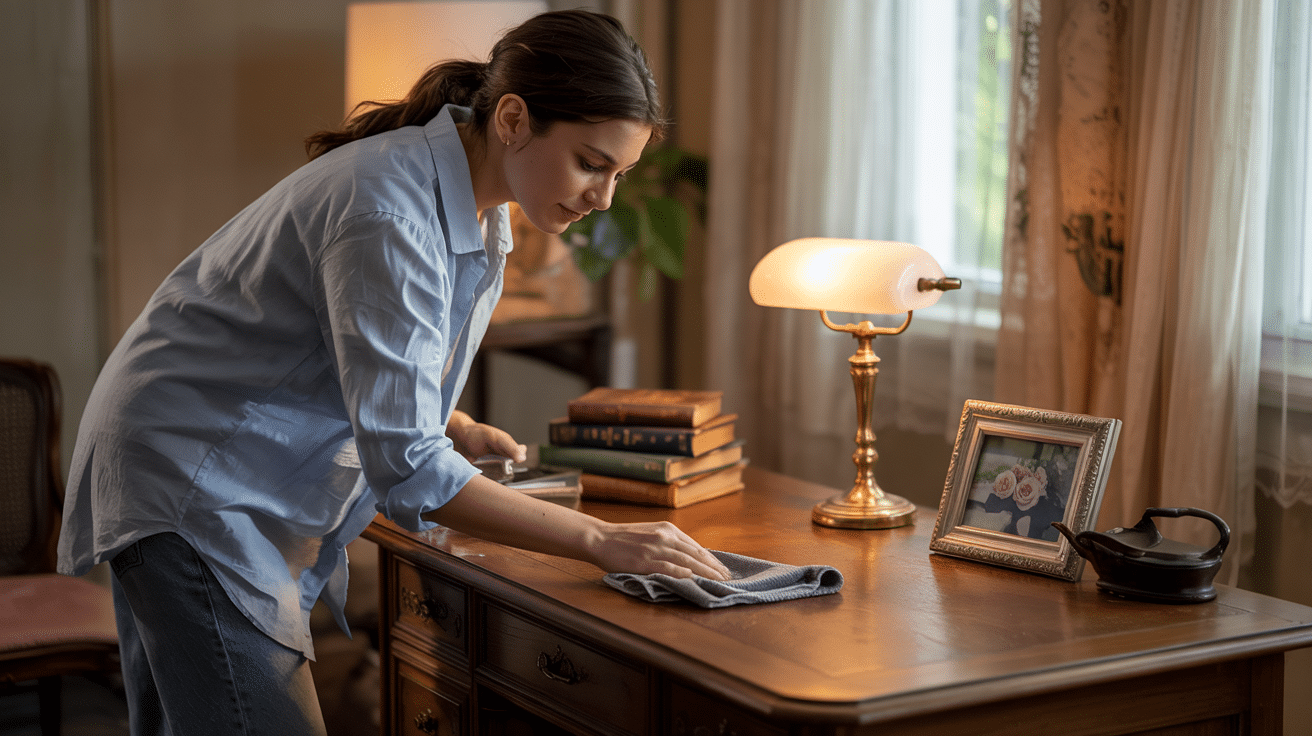
Dust off all your furniture—desk, shelves, nightstand, and any other surfaces that collect dust. Don’t forget high places like picture frames, lamps, and ceiling fans.
Start from the highest point and work your way down. This way, you won’t dust something and then end up disturbing it while cleaning a lower surface.
-
What if: If dust is stuck in hard-to-reach areas (like between shelves), use a soft brush or cloth to get into tight spots. A microfiber cloth works best for picking up dust without spreading it around.
Step 5: Wipe Down Surfaces
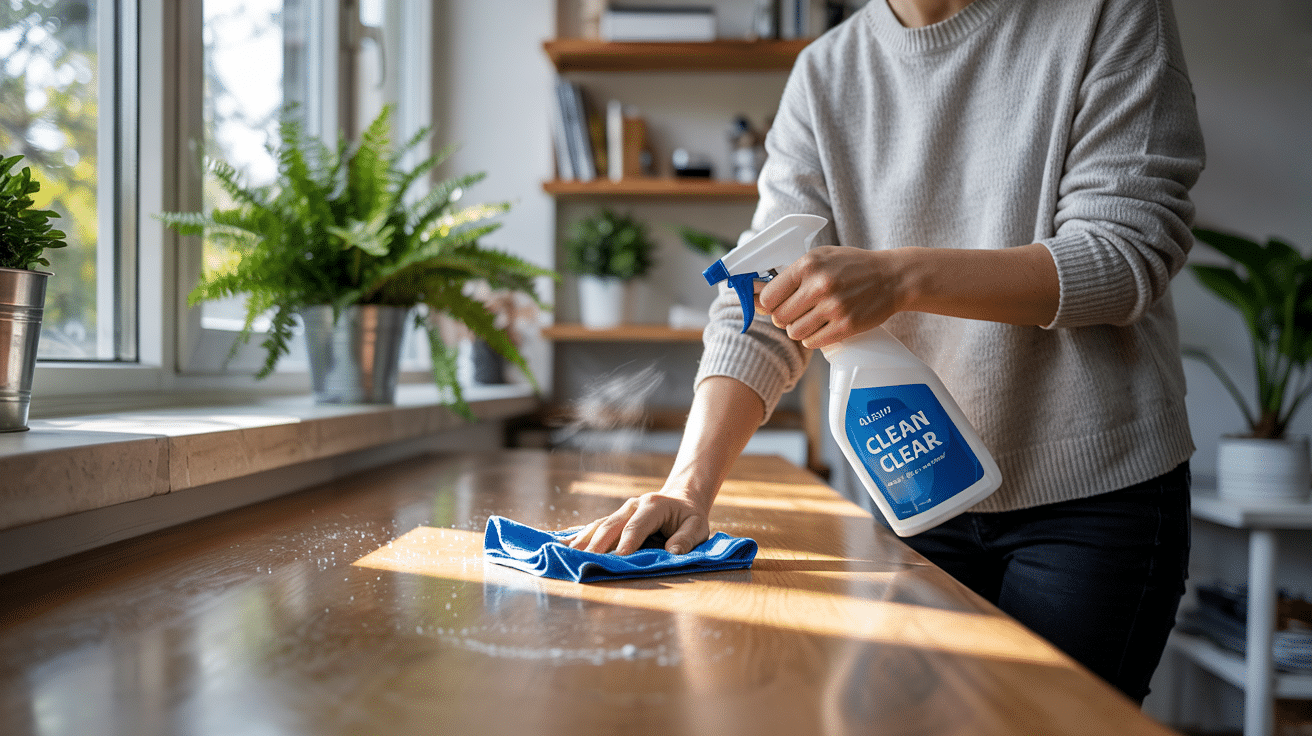
Grab a damp cloth and all-purpose cleaner to wipe down your desk, shelves, and tables. Don’t forget to clean window sills, light switches, and doorknobs.
Use a microfiber cloth for wiping surfaces. It’s great for catching dust and grime without leaving streaks or fibers behind.
-
What if: If any sticky spots or stains won’t come off with the cloth, spray the area with cleaner and let it sit for a minute. This will loosen up the mess, making it easier to wipe away.
Step 6: Clean the Floor

Vacuum or sweep your entire floor, including corners and underneath furniture.
Move smaller furniture pieces, like chairs or stools, to make sure you get every spot. If your vacuum doesn’t reach the corners, try using the crevice tool for better reach.
-
What if: If you’re vacuuming a large carpeted area, work in small sections. It’s easier to make sure everything is clean, and you won’t miss any spots. For hard floors, mop if needed after sweeping.
Step 7: Tidy Up Your Bed

Smooth out your sheets, fluff your pillows, and fold any blankets neatly at the top of the bed.
A made bed is a game-changer for how your room looks. Even if you don’t make your bed every day, doing it once during your cleaning session will make everything else seem more organized.
-
What if: If you’ve got a lot of pillows or extra blankets, put the pillows in a neat arrangement at the head of the bed. You can also fold extra blankets and place them at the foot of the bed or store them away if you need the space.
Step 8: Final Touches
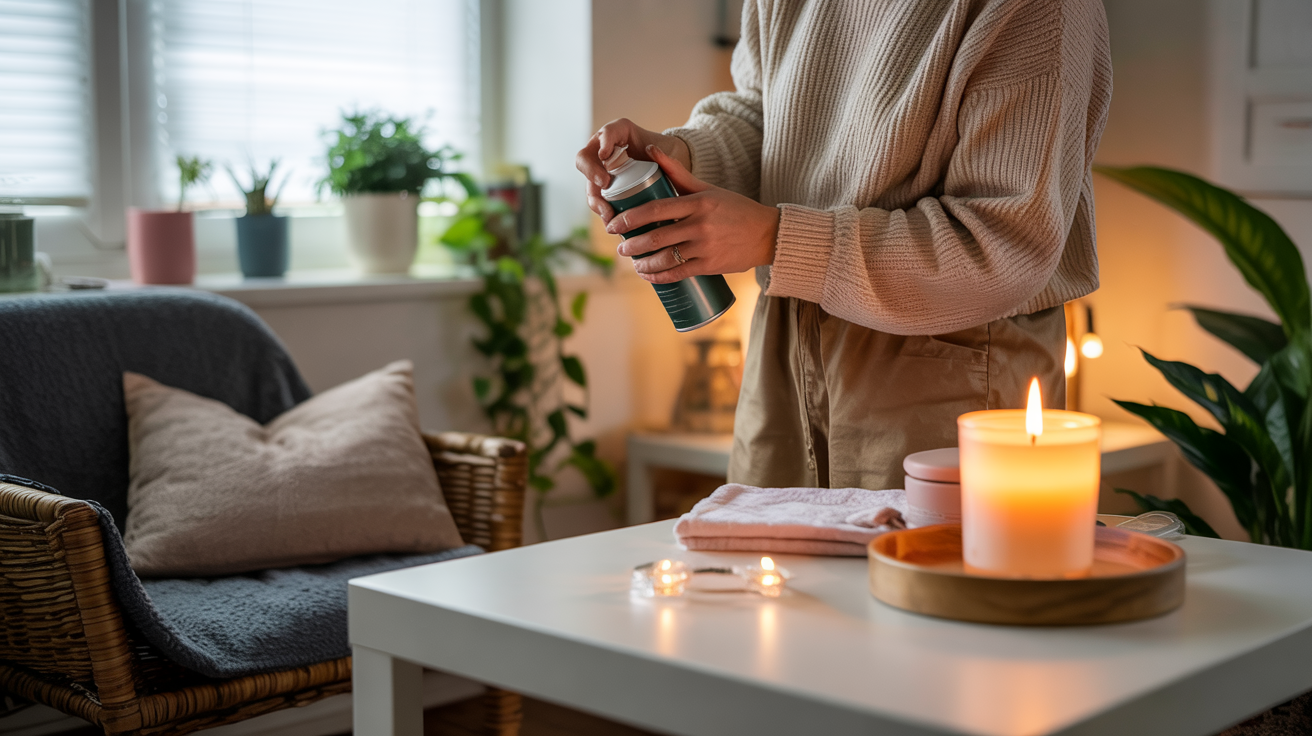
Take a moment to step back and check how your room looks. Maybe spray some air freshener or light a candle to give it a fresh smell.
Adding small touches, like adjusting a chair or adding a plant to the windowsill, can give your room a more complete, cozy feeling.
Step 9: Check for Any Missed Spots
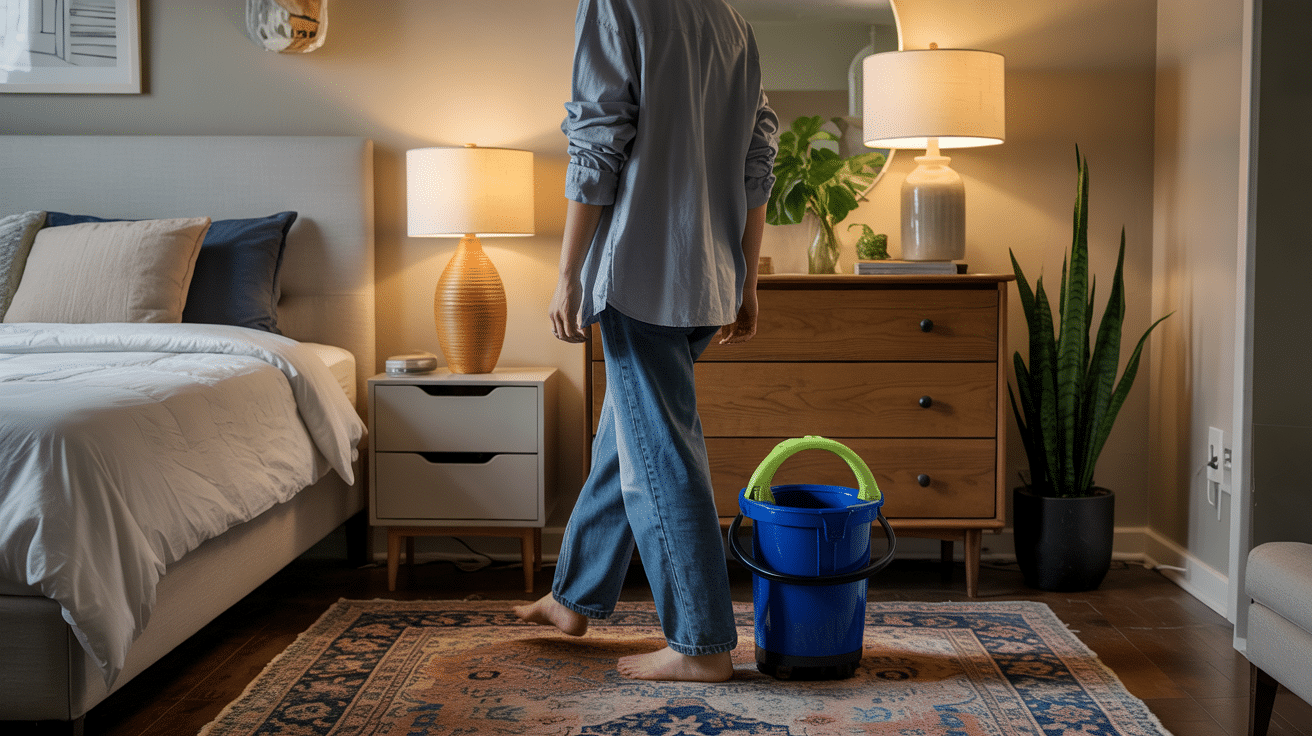
Take a final walk around the room to check for anything you might have missed. Look under the bed, behind furniture, and in any other hidden areas.
If you spot any areas you missed, now’s the time to clean them. This includes any spots that might have been overlooked, like baseboards or the area behind your desk.
Got Wall Stains? Here’s How to Remove Them!
For light stains like dirt or fingerprints, mix a small amount of dish soap with warm water. Use a damp cloth to gently wipe the area. For grease or grime, sprinkle baking soda on a damp cloth and scrub the stain.
If you’re dealing with mold or mildew, mix equal parts vinegar and water, apply it to the stain, and scrub gently.
Quick Tips:
- Dish Soap & Water: Good for everyday dirt and smudges.
- Baking Soda: Effective for grease or crayon marks.
- Vinegar & Water: Great for mold and mildew.
Product Recommendations for Wall Stains
If home remedies don’t do the trick, try these products:
- Magic Eraser: Perfect for tough stains like scuff marks or crayon.
- Krud Kutter: Best for grease or sticky residues in kitchens.
- Lysol Mold & Mildew Remover: Ideal for bathrooms or damp areas.
- Wall & Trim Cleaner: A good all-around option for general cleaning.
These solutions should help tackle most stubborn stains, whether you prefer DIY or store-bought options.
Time-Saving Tips for a Smooth Room Cleaning Routine
Finding time to clean your room can feel challenging with a packed schedule. However, breaking it down into manageable chunks throughout the week can help you maintain a tidy space without feeling overwhelmed.
Here is how to do it:
For a Working Professional
Challenges: You’re busy with work during the day and likely only have evenings and weekends to maintain a clean room. Balancing home life, errands, and self-care leaves little time for cleaning.
How to Make Time:
-
Evening Quick Clean (10-15 minutes): After work, spend 10-15 minutes tidying up—make your bed, clear clutter, and put things away.
-
Power Hour on Weekends (1 Hour on Saturday or Sunday): Focus on bigger tasks like vacuuming, organizing your closet, and cleaning your bathroom (if it’s in the same space).
-
Create a Cleaning Checklist: List a few tasks you want to accomplish each weekend, like changing bed linens, dusting, or organizing your desk. This keeps things manageable and prevents procrastination.
For a Student
Challenges: As a student, balancing class schedules, study sessions, and social activities leaves little time for cleaning. It can be easy for messes to pile up when there’s always something more pressing.
How to Make Time:
-
Daily Cleanup (10-15 minutes): Spend 10-15 minutes each evening tidying up—make your bed, clear your desk, and put away clothes.
-
Split Tasks: Break cleaning into daily chunks to avoid big cleaning sessions. For example, Monday is for cleaning your desk, Tuesday for organizing your closet, and Wednesday for vacuuming.
-
Weekend Deep Clean (30-45 minutes): Set aside time on weekends for tasks like vacuuming and laundry.
Conclusion
A clean room is more than just a tidy space – it’s an investment in your mental well-being, physical health, and daily productivity.
By following the nine-step process outlined in this guide and adapting the time management strategies to fit your schedule, you can maintain a clean room without feeling overwhelmed.
No matter if you’re a busy professional squeezing in quick evening cleanups or a student breaking tasks into manageable chunks, the key is finding a routine that works for your lifestyle.
Start with the basics, build good habits, and you’ll soon find out that a cleaner room leads to clearer thinking and a more peaceful home environment.
Your future self will thank you for the few minutes you spend today picking up those clothes, organizing your desk, or finally tackling those stubborn wall stains.

